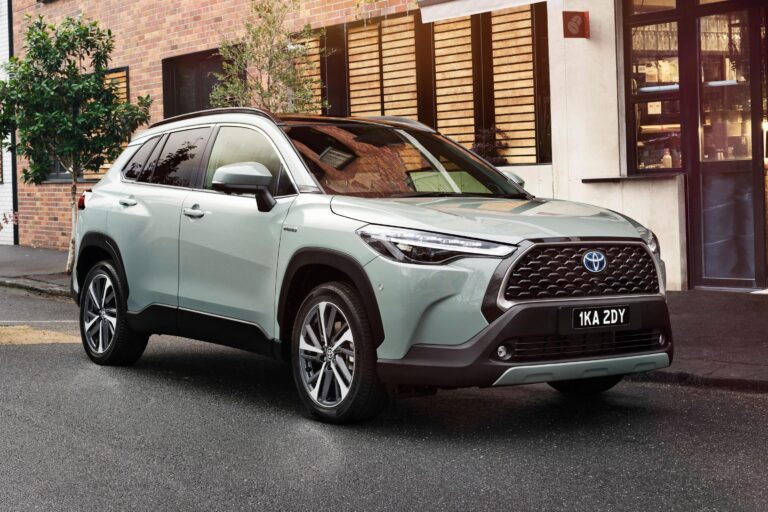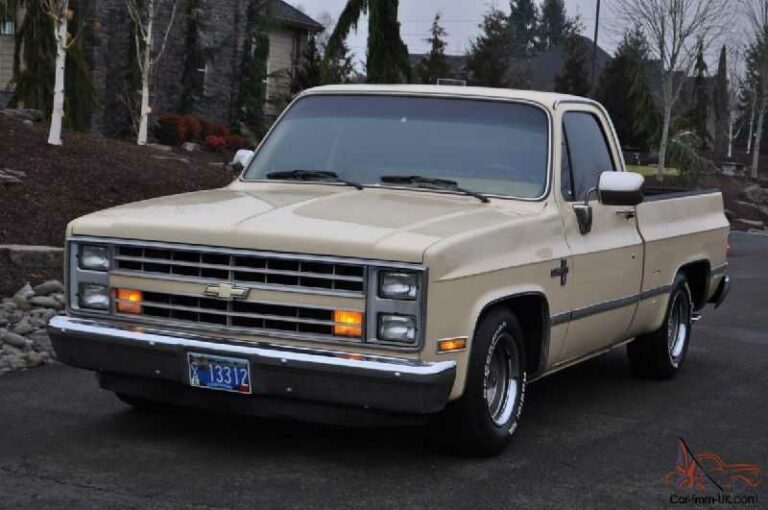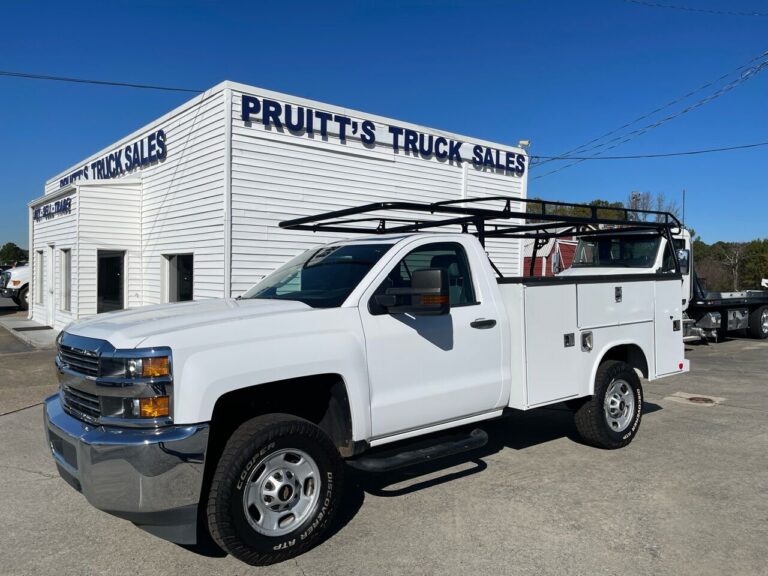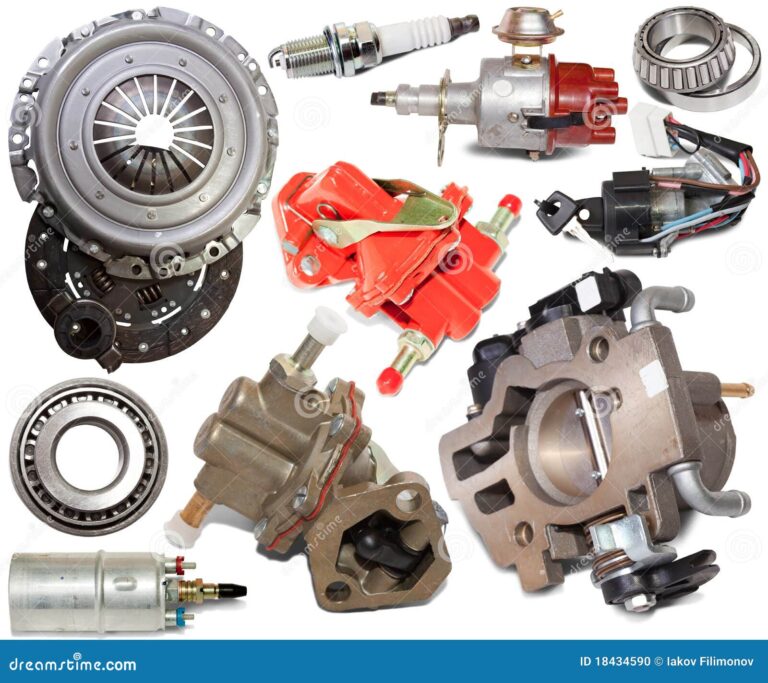Lifted Trucks For Sale Az: Your Ultimate Guide to Finding the Perfect Elevated Ride in Arizona
Lifted Trucks For Sale Az: Your Ultimate Guide to Finding the Perfect Elevated Ride in Arizona cars.truckstrend.com
Arizona, with its sprawling deserts, rugged mountain trails, and a vibrant outdoor culture, is a natural habitat for a specific breed of vehicle: the lifted truck. More than just a statement of style, a lifted truck in Arizona is often a testament to utility, capability, and a readiness to conquer the diverse landscapes the Grand Canyon State offers. Whether you’re an avid off-roader, a heavy hauler, or simply someone who appreciates the commanding presence and enhanced visibility, the market for lifted trucks for sale in AZ is robust and diverse.
This comprehensive guide aims to be your definitive resource for understanding, finding, and buying the perfect lifted truck in Arizona. We’ll delve into why these elevated machines are so popular here, explore the nuances of different lift kits, navigate the local market, and provide crucial advice to ensure your purchase is a sound investment for years of adventure.
Lifted Trucks For Sale Az: Your Ultimate Guide to Finding the Perfect Elevated Ride in Arizona
The Arizona Advantage: Why Lifted Trucks are a Desert Essential
The popularity of lifted trucks in Arizona isn’t just a trend; it’s a practical response to the unique demands and opportunities presented by the state’s geography and lifestyle. Here’s why these elevated vehicles thrive in the Copper State:
- Unrivaled Off-Roading Capabilities: Arizona boasts an incredible network of off-road trails, from challenging rocky ascents in the Bradshaw Mountains to sandy washes in the Sonoran Desert. A lifted truck provides the essential ground clearance needed to navigate obstacles like large rocks, deep ruts, and uneven terrain without scraping the undercarriage. Enhanced suspension articulation allows wheels to maintain contact with the ground on highly uneven surfaces, crucial for traction.
- Navigating Washes and Floods: Monsoon season brings sudden, powerful downpours that can turn dry washes into raging rivers. While caution is always advised, the increased ride height of a lifted truck can offer a crucial advantage when traversing shallower water crossings or areas prone to temporary flooding, protecting vital engine components.
- Superior Towing and Hauling: Many Arizonans own boats for the state’s numerous lakes, RVs for weekend getaways, or utility trailers for work and recreation. A lifted truck, often equipped with robust suspension and larger tires, can offer improved stability and a more level towing experience, especially when dealing with heavy loads or uneven ramps.
- Commanding Visibility: The vast, open stretches of Arizona highways and the high vantage point offered by a lifted truck provide drivers with an unparalleled view of the road ahead and surrounding traffic. This enhanced visibility can contribute to a safer and more confident driving experience, particularly when navigating busy Phoenix freeways or spotting wildlife on rural roads.
- Aesthetics and Personal Expression: Beyond utility, the aggressive stance and imposing presence of a lifted truck resonate deeply with Arizona’s truck-centric culture. For many, it’s a form of personal expression, a reflection of a rugged, adventurous spirit and a love for the outdoors. Customization options, from wheels and tires to lighting and bumpers, allow owners to truly make their truck their own.
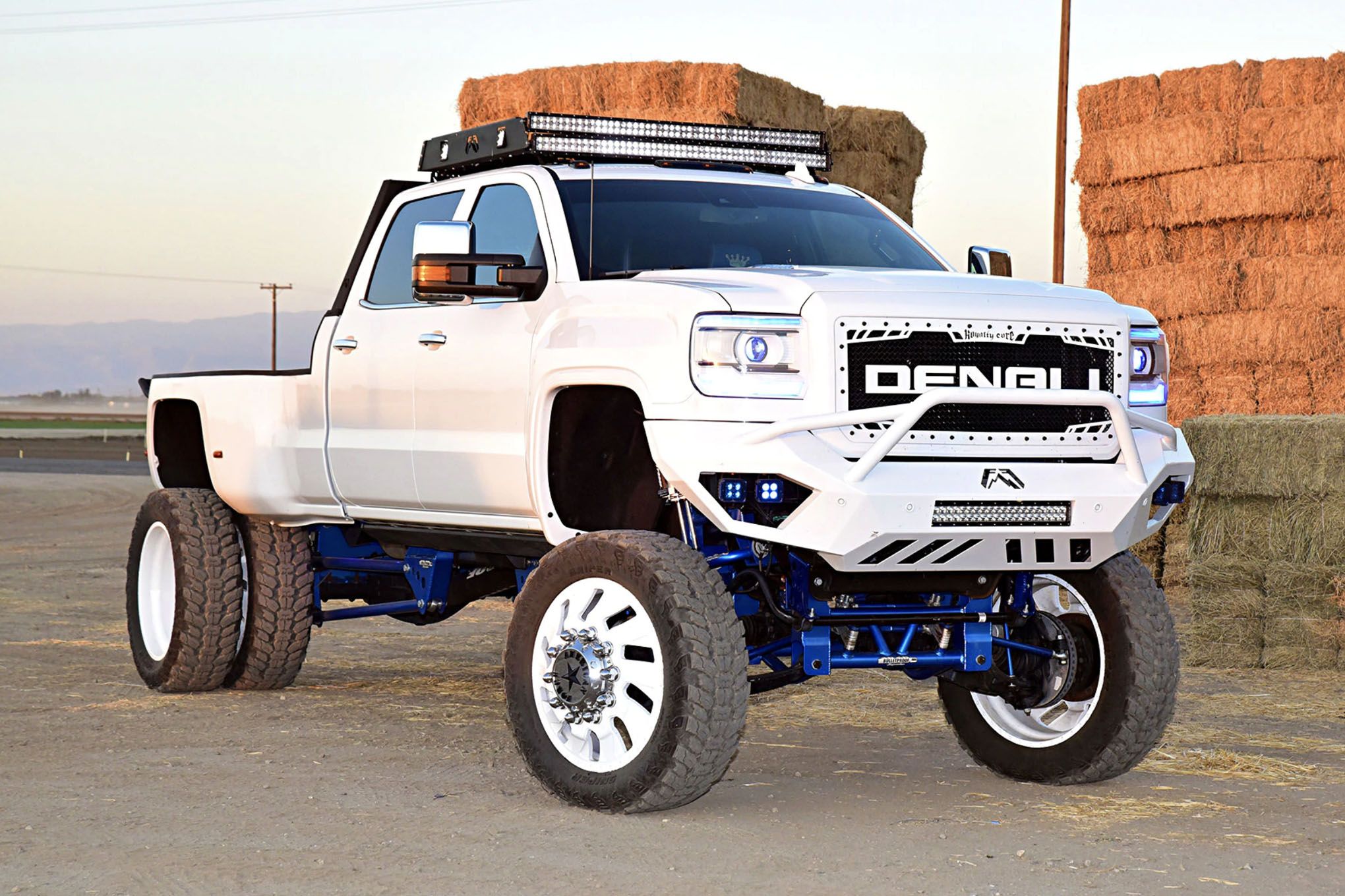
Decoding the Lift: Types of Kits and Their Benefits
Understanding the different ways a truck can be lifted is crucial for making an informed purchase. Not all lifts are created equal, and each type serves a specific purpose, impacting ride quality, capability, and cost.
-
Leveling Kits: These are the simplest and most affordable lift options. Most trucks come from the factory with the front slightly lower than the rear (a "rake") to accommodate heavy loads in the bed. A leveling kit typically adds 1-3 inches to the front suspension, bringing the truck to a more level stance.
- Benefits: Inexpensive, easy to install, improves aesthetics by eliminating the rake, allows for slightly larger tires (often 33-inch).
- Considerations: Minimal increase in ground clearance, primarily cosmetic, doesn’t significantly enhance off-road performance.
-
Body Lifts: A body lift involves placing spacers between the truck’s cab/bed and its frame, effectively raising the body without altering the suspension.
- Benefits: Relatively inexpensive compared to suspension lifts, retains factory ride quality, allows for significantly larger tires (e.g., 35-inch) with minimal impact on suspension geometry.
- Considerations: Doesn’t increase ground clearance at the axles (the lowest point), can expose the frame rails, may require extensions for steering, fuel filler, and bumper mounts.
-
Suspension Lifts: These are the most comprehensive and popular types of lifts for serious off-road enthusiasts. A suspension lift replaces or modifies existing suspension components (shocks, springs, control arms, leaf springs, etc.) to increase the distance between the axles and the frame. Lifts can range from 2 inches to 12 inches or more.
- Benefits: Provides true ground clearance at the axles, significantly improves off-road capability, allows for very large tires (35-inch to 40-inch+), enhances suspension travel and articulation.
- Considerations: More expensive and complex to install, can alter ride quality (sometimes stiffer, sometimes softer depending on components), may require modifications to driveline, steering, and braking components, potentially impacts fuel economy and towing stability.
Within suspension lifts, you’ll encounter various designs:
- Coil-over Lifts: High-performance systems offering excellent damping and adjustability.
- Leaf Spring Lifts: Common on older trucks and heavy-duty applications, involving replacing or adding leaves.
- Block Lifts: Less desirable, using blocks to raise the axle, can lead to axle wrap and instability.
When considering a lifted truck, inquire about the specific type and brand of lift kit installed. A professionally installed, reputable brand kit is a significant advantage over a budget or poorly installed setup.
Navigating the Market: Where to Find Lifted Trucks in AZ
Finding your ideal lifted truck in Arizona requires knowing where to look and how to refine your search. The market is diverse, offering options for every budget and preference.
-
New and Used Car Dealerships: Many dealerships in Arizona, especially those specializing in trucks (e.g., Ford, Ram, Chevrolet, Toyota, Nissan), will have a selection of factory-lifted or dealer-modified trucks. Some even partner with local custom shops to offer unique builds.
- Pros: Often come with warranties (for new or certified pre-owned), financing options, professional detailing, and a transparent buying process.
- Cons: Higher prices, less room for negotiation on custom builds.
-
Specialized Truck & Off-Road Shops: Arizona is home to numerous custom truck and off-road accessory shops. Many of these businesses not only install lifts but also sell pre-built lifted trucks, often showcasing their expertise. They may also take consignments.
- Pros: Expert knowledge, high-quality builds, unique customizations, potential for ongoing service.
- Cons: Inventory might be smaller, prices can be premium due to custom work.
-
Online Marketplaces (Local & National):
- Craigslist & Facebook Marketplace: Excellent for finding private sellers in your local area (Phoenix, Tucson, Flagstaff, etc.). You can often find great deals, but due diligence is paramount.
- AutoTrader, Cars.com, CarGurus: These national platforms allow you to filter by location, make, model, and often by features like "lifted" or "4×4." They aggregate listings from both dealerships and private sellers.
- eBay Motors: Good for unique or highly customized builds, sometimes with nationwide shipping options.
- Pros: Vast selection, potential for lower prices from private sellers, convenience of browsing from home.
- Cons: Higher risk from private sellers (no warranties, "as-is" sales), need to verify information and condition carefully.
-
Local Auctions: Public and dealer auctions can sometimes yield lifted trucks, but this route is best for experienced buyers who can quickly assess vehicle condition.
Tips for Your Search:
- Use Specific Keywords: When searching online, use terms like "lifted F-150 Arizona," "Ram 2500 lifted AZ," "custom Silverado for sale Phoenix," "4×4 lifted truck Tucson," or "off-road truck Flagstaff."
- Filter by Features: Look for options like 4×4, specific tire sizes (e.g., 35-inch tires), aftermarket wheels, off-road packages, and winch mounts if those are important to you.
- Set a Realistic Budget: Not just for the purchase price, but for insurance, potential maintenance, and increased fuel costs.
Smart Buying: Essential Checks Before You Buy
Purchasing a lifted truck requires an extra layer of scrutiny compared to a stock vehicle. The quality of the lift installation and its impact on other components are critical.
-
Define Your Purpose and Budget:
- Purpose: Will this be a daily driver, a dedicated off-roader, or a show truck? Your intended use will dictate the type and extent of lift you need.
- Budget: Beyond the sticker price, factor in potentially higher insurance premiums, increased fuel consumption (due to larger tires and aerodynamics), and maintenance costs for specialized components.
-
Thorough Inspection of the Lift Kit and Undercarriage:
- Professional Installation: Ask for documentation of the lift kit installation. Was it done by a reputable shop? Poorly installed lifts can lead to alignment issues, premature wear, and even dangerous handling.
- Component Check: Examine all lift components: shocks, springs, control arms, U-joints, driveshafts, brake lines, and steering components. Look for signs of stress, cracks, leaks, or rust (though less common in AZ, check areas where water might collect). Ensure brake lines and ABS wires have been properly extended.
- Driveshaft Angles: After a significant suspension lift, driveshaft angles can become extreme, leading to vibration and premature U-joint wear. Look for signs of a "drop bracket" or other modifications to correct these angles.
- Tire Wear: Uneven tire wear (feathering, cupping) can indicate alignment problems, which are common after a lift if not properly addressed.
-
Pre-Purchase Inspection (PPI) by a Specialist: This is non-negotiable. Take the truck to a trusted mechanic who specializes in 4x4s and lifted vehicles. They can identify potential issues that might be missed by a general mechanic, especially those related to the modified suspension and drivetrain.
-
Test Drive:
- On-Road: Pay close attention to steering response, braking performance, and any unusual noises or vibrations. Does it pull to one side? Is the steering loose? How does it handle bumps and turns?
- Off-Road (if applicable): If you plan to off-road, try to test it on some uneven terrain (with seller’s permission) to assess suspension articulation and overall capability.
- Braking: Larger tires increase stopping distances. Ensure the brakes feel firm and responsive.
-
Check Arizona Lift Laws: Arizona has specific regulations regarding maximum vehicle height and tire coverage. Ensure the truck you’re considering complies with these laws to avoid fines and potential insurance issues. Generally, the maximum frame height is 24 inches for vehicles under 4,500 lbs, 26 inches for 4,501-8,000 lbs, and 30 inches for 8,001-10,000 lbs. Tires must not protrude beyond the fenders.
-
Insurance Implications: Inform your insurance provider that you are considering a lifted truck. Some providers may charge higher premiums for modified vehicles, or may not cover certain aftermarket components in case of an accident.
Beyond the Purchase: Keeping Your Lifted Truck in Top Shape
Owning a lifted truck, especially one that sees off-road action, requires proactive maintenance.
- Regular Alignment Checks: Lifts and larger tires put more stress on steering and suspension components. Get alignments checked regularly (every 6 months or after severe off-roading) to prevent premature tire wear and ensure proper handling.
- Tire Rotation and Balancing: Essential for maximizing tire life and maintaining smooth driving.
- Suspension Component Inspection: Regularly inspect shocks, bushings, control arms, and tie rods for wear, cracks, or damage, especially after off-road excursions.
- Driveshaft and U-Joint Maintenance: Check for play or noises, as increased angles can accelerate wear.
- Post-Off-Road Cleaning: Thoroughly wash the undercarriage after driving through mud, sand, or rocky trails to remove corrosive elements and prevent damage.
Estimated Price Range for Lifted Trucks in Arizona
The cost of a lifted truck in Arizona can vary dramatically based on the truck’s make, model, year, mileage, condition, the quality and extent of the lift kit, and any additional aftermarket accessories. The table below provides a general estimate for used lifted trucks. Brand new, dealer-lifted trucks will typically start at a much higher price point.
| Truck Type/Condition | Basic Leveling Kit (Used) | Moderate Suspension Lift (Used) | Custom/High-End Lift (Used) | Brand New (Dealer Lifted) |
|---|---|---|---|---|
| Older Models (10+ years) | $10,000 – $20,000 | $15,000 – $25,000 | $20,000 – $35,000 | N/A |
| Mid-Range (5-10 years) | $20,000 – $35,000 | $25,000 – $45,000 | $30,000 – $60,000 | N/A |
| Newer Models (0-5 years) | $35,000 – $55,000 | $40,000 – $70,000 | $50,000 – $90,000+ | $60,000 – $100,000+ |
| Factors Affecting Price: | Make/Model, Mileage, Condition, Quality of Lift Kit, Aftermarket Accessories (winches, bumpers, lights), Dealer vs. Private Seller, Brand Reputation. |
Note: These are general estimates and prices can fluctuate significantly based on market demand and specific vehicle details.
Frequently Asked Questions (FAQ) about Lifted Trucks in Arizona
Q: Are lifted trucks legal in Arizona?
A: Yes, lifted trucks are legal in Arizona, but they must comply with specific height regulations based on the vehicle’s gross vehicle weight rating (GVWR). Additionally, tires cannot protrude beyond the vehicle’s fenders. Always verify the current Arizona statutes (ARS 28-953) for precise details.
Q: Does lifting a truck void the warranty?
A: Potentially. While the Magnuson-Moss Warranty Act generally protects consumers, a dealership can deny warranty claims for parts that were directly affected or damaged by the lift kit or its installation. For example, if a suspension component fails, the warranty on that component might be voided, but your engine warranty would likely remain intact. Always check with the manufacturer or dealer before modifying a new vehicle.
Q: How much does it cost to lift a truck in Arizona?
A: The cost varies widely. A basic leveling kit might be $200-$500 (parts only), while a full suspension lift can range from $1,000 to over $10,000, depending on the kit’s complexity, brand, and professional installation fees. Custom, high-performance kits can push costs even higher.
Q: Do lifted trucks use more gas?
A: Generally, yes. Larger, heavier, and more aggressive tires increase rolling resistance. The elevated stance and wider tires also increase aerodynamic drag. These factors combine to reduce fuel efficiency compared to a stock truck.
Q: Is it harder to drive a lifted truck?
A: It can take some getting used to. A lifted truck has a higher center of gravity, which can affect handling, especially during cornering or in strong crosswinds. Braking distances might also increase due to larger tires. Visibility improves for seeing over traffic but can create blind spots closer to the truck. Parking in garages or navigating drive-thrus might also become more challenging.
Q: What’s the difference between a body lift and a suspension lift?
A: A body lift raises the truck’s cab and bed away from the frame, providing clearance for larger tires without altering the suspension geometry or ground clearance at the axles. A suspension lift modifies or replaces suspension components (springs, shocks, control arms) to increase the distance between the axles and the frame, resulting in true ground clearance gains and often improved off-road performance.
Conclusion
The allure of lifted trucks for sale in Arizona is undeniable, blending rugged aesthetics with practical utility perfectly suited for the state’s diverse terrain and outdoor lifestyle. From conquering challenging off-road trails to providing a commanding view on endless highways, a well-chosen lifted truck can unlock new levels of adventure and capability.
However, the journey to finding your ideal elevated ride requires diligence and informed decision-making. By understanding the types of lifts, knowing where to search, conducting thorough inspections, and budgeting for ongoing maintenance, you can ensure your investment brings years of reliable performance and enjoyment. Embrace the Arizona spirit, do your homework, and soon you’ll be navigating the desert and mountains from the elevated perspective of your perfect lifted truck.
